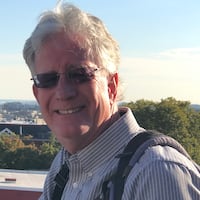“Immerse yourself in the heartland of ancient America, where spectacular cultures created the largest concentration of geometric earthen architecture in the world,” the opening paragraph on the Ancient Ohio Trail website reads.
The trail and the work done connecting the ancient sites also build the case for the coveted global tourist attraction designation sought collectively for Fort Ancient and eight other Ohio cultural sites through the United Nations Educational, Scientific and Cultural Organization (UNESCO).
“We’ve got a good first step toward helping visitors learning and visiting these sites,” said George Kane, director of historic sites and facilities for the Ohio History Connection, a state organization backing the World Heritage Site process.
The Warren County Regional Planning Commission is building a long-range plan for development around the I-71 interchange at Wilmington Road in anticipation of the World Heritage Site designation.
The success of the World Heritage application depends in part on the findings of a report to be provided by Margaret Gowen, an Irish archaeologist who recently visited Ohio for the International Council on Monuments and Sites (ICOMOS), the group charged with reviewing site applications for UNESCO.
Gowen could not be reached about her findings.
“She said the Ancient Ohio Trail was a great source as she delved into ancient Ohio,” said Kane, one of the area officials who met with Gowen during her visit.
Developed by professors from the University of Cincinnati and The Ohio State University Newark Campus, the Ancient Ohio Trail offers Ohioans and tourists from around the world routes to follow to visit the four sites harking back to American Indian cultures 1,000 years or more ago.
It also provides technological aspects ranging from a multimedia experience for armchair historians to a cell phone app with an “augmented reality” feature enriching the experience for people who actually travel to a site.
“It’s designed to work both ways,”said John Hancock, the University of Cincinnati professor emeritus who developed the Ancient Ohio Trail and chairs a steering committee backing the World Heritage Site application.
The website features sites, routes, topics and a timeline placing the earthworks as far back as 2 million years B.C. in the Ohio Valley history. Tourists can also find lodgings, restaurants and other points of interest near the sites.
Looking ahead, Hancock also predicted the Ancient Ohio Trail effort would give those putting together materials for Ohio’s first World Heritage Site a head start.
“For World Heritage, we have to define what UNESCO calls the outstanding universal value, OUV for short,” he said.
About the Author

